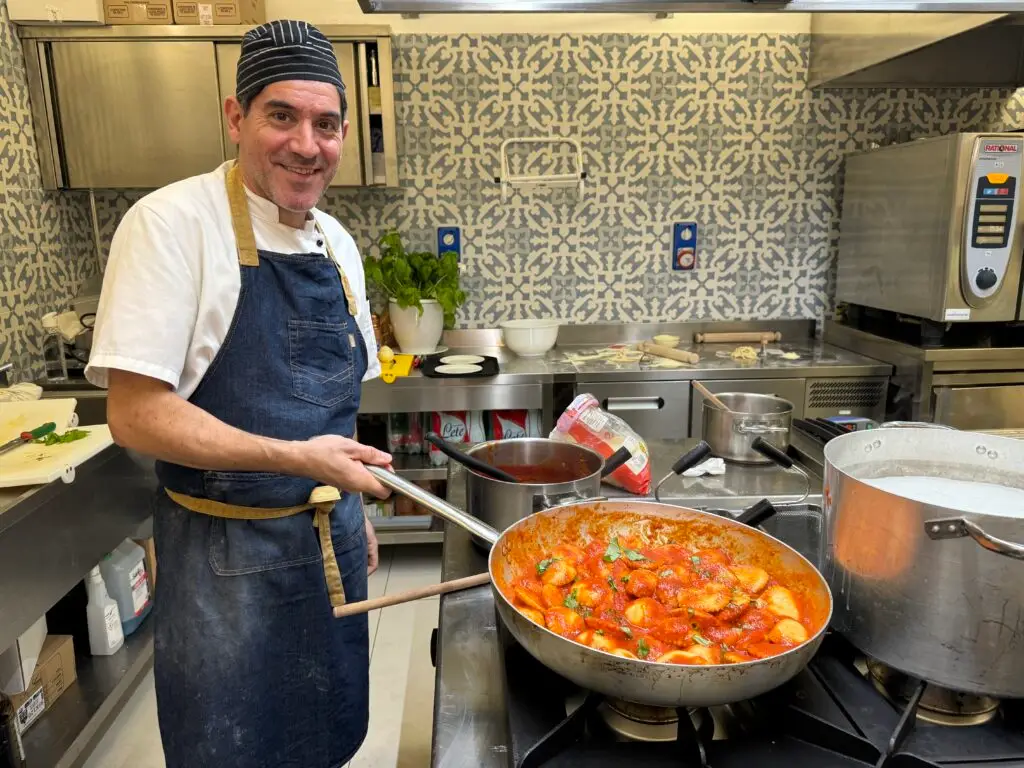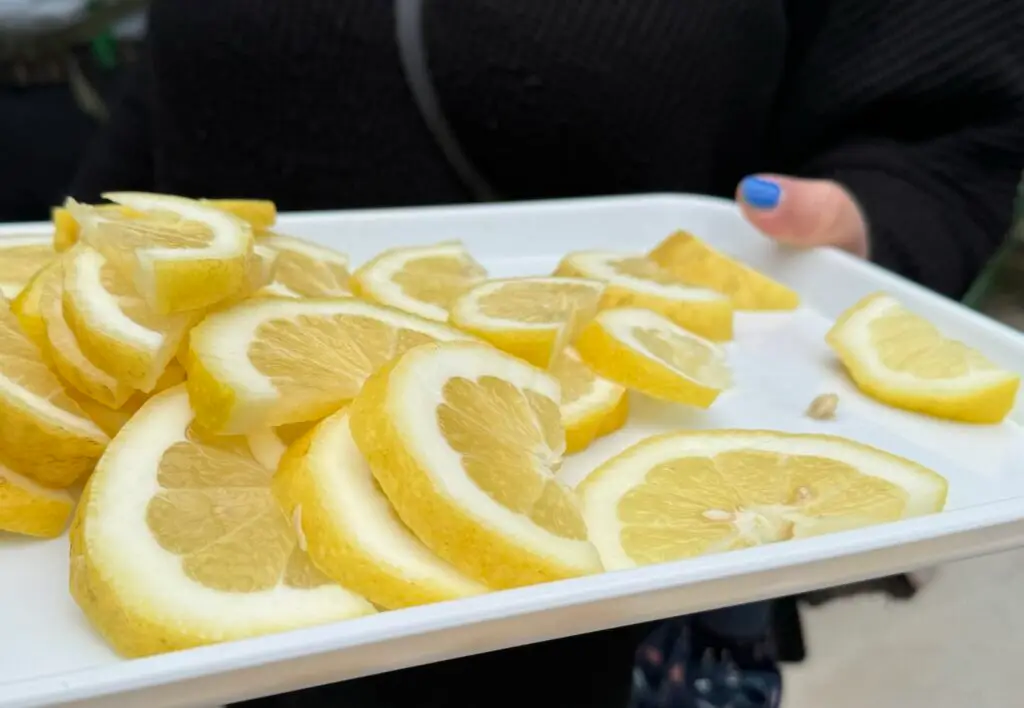Naples is the home of pizza. A Napoli pizza is a tasty but simple affair. A soft yeasted dough is spread with a tangy sauce made of San Marzano tomatoes then topped with a generous dab of buffalo mozzarella, a spritz of olive oil and one or two basil leaves. It’s cooked for 90 seconds in a wood fired oven heated to a minimum of 800 degrees Fahrenheit.

“True” San Marzanos are grown in Sarnese-Nocerino, near Mount Vesuvius. The volcanic soil gives the fruit a distinctive sweetness, low acidity and a concentrated tomato flavor. The San Marzano variety is also grown in California, however the American variety has higher acidity and is more heavily salted during the canning process.
Mozzarella di buffalo is a rich, soft, semi elastic cheese made from the milk of water buffalo. Water buffalo milk has a higher protein and calcium content than cows milk with lower cholesterol. The largest herds of Italian water buffalo can be found in Campania, the Italian administrative region that includes Naples and the Amalfi coast. Water buffalos have large horns and unlike cows, they make a barking noise.

The whey that remains after making mozzarella is used to make ricotta. Ricotta can also be made from goat, sheep or cow milk. I was fortunate to sample three water buffalo cheese products during a food tasting tour in Sorrento. All three cheeses were delicious . The simple accompaniments and a glass of local wine complemented and further elevated the experience.
Local cheeses are also prevalent in regional pasta recipes. I took a pasta class and learned the secrets of making ravioli. The pasta for ravioli can also be used for cannoli, lasagna and tortellini. We made a cheese ravioli with a rich tomato sauce. It was the best cheese ravioli I’ve ever eaten. The pasta was delicate and the sauce was the perfect foil to the rich cheese filling. I’ll be making a batch of ravioli next week. Though I’m sure I’ve mastered the technique I’m also sure that our local ingredients are inferior to their Italian counterparts.

Ricotta is also paired with Amalfi lemons in several desserts. The entire Amalfi lemon is edible. I sampled lemon slices where I ate the rind, pith and fruit. The Amalfi lemon is bigger, sweeter and softer than other varieties. Once again, the terroir, the local volcanic soil, gives the fruit a vibrant flavor.
Lemons were immortalized in ceramics and frescos from Roman times. The small, highly acid fruit was used as a perfume and astringent. In the beginning of the second millennium, lemon branches were grafted to bitter orange root stock. The resulting fruit was larger and sweeter. The roots of the bitter orange tree run deep and help to stabilize the steeply terraced hillsides. The lemon trees flower in May and are ready for harvest in March.

Lemon is used in pasta, meat entres, salads and rich, soul satisfying pastries. The preferred morning pastry is Sfogliatella. It’s the perfect breakfast. An Italian variation of puff pastry is filled with a creamy lemon flavored ricotta. The pastry is best when eaten warm just out of the oven. My summer culinary goal is to master the Sfogliatella.

The Italian diet changes with the season. I’m used to eating zucchini, broccoli and crudités year round. But along the coast of Amalfi, the produce coincides with the season. In April, artichokes are the vegetable du jour. Pasta, bread and cheeses are the mainstay of the local diet.
Perhaps, the delicious, albeit high carb diet, is the reason many travelers are confronted with the Italian vacation phenomenon of wardrobe shrinkage. The pants that fit comfortably when you left the US have magically shrunk during ten days in Italy!
You can always buy new pants, but how often can you dine on pasta con le vongole or bite into a warm, cheese filled, Italian pastry.
Ciao
